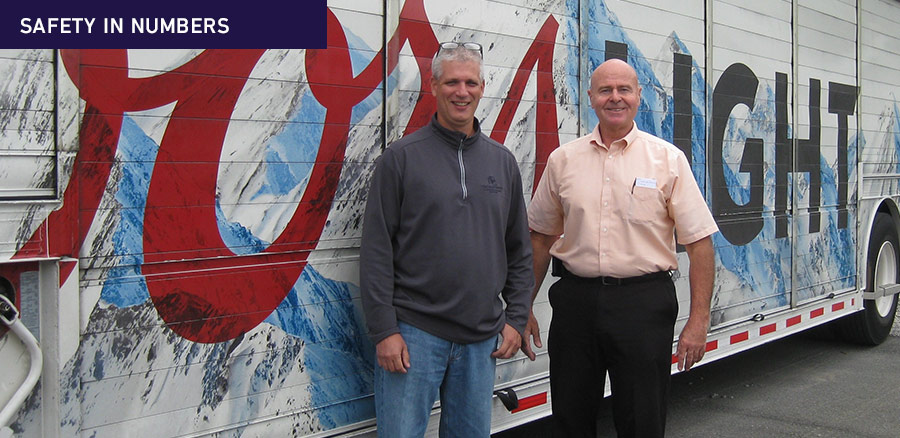Retrain to Retain: How Video-Based Coaching Can Help You Retain Drivers

Some people believe in-cab video can trigger a mass exodus of drivers fearing retribution for driving mistakes.
But DriveCam program clients Southern Maryland Oil, J&R Schugel Trucking, and DeCrescente Distributing Co. recently reported just the opposite. Fleet safety managers at these companies say retention, which is critical amid a crippling national driver shortage, improved after they installed driver-facing cameras.
The key, according to fleet safety managers, lies in how companies utilize the video they get back. Instead of using video clips as a gotcha for misbehavior, companies can successfully boost retention by using clips to coach drivers and reinforce safe driving practices. We interviewed DeCrescente, a beverage distributor based in Mechanicville, New York, about the company’s policy of retraining to retain its drivers.
“We have really great employees that sometimes have a bad day,” said Ray Cordani, director of safety for DeCrescente. “Do we throw them away? No. We discuss the incident. How did this happen? Let’s go back to the scene and talk about it. We retrain and move on. The important thing is that they see you’re there to help them become better drivers and stay safer.”
Prior to having in-cab video through the DriveCam program, the company focused on enforcement as a way to reduce risk. Now the video is used as a tool to enhance driving skills, therefore reducing accidents and distractions. This shift has helped DeCrescente not only keep drivers on board, it’s also helped to improve their driving skills, said Scott Miller, DeCrescente’s delivery manager. Following distance improved, seat belt usage increased 21 percent, and collisions declined.
For the vast majority of events, the company retrains as a first step. “Every issue is coached first,” Miller said.
Miller strives to make coaching sessions productive by combining candor with kindness. “The coaching is positive, but honest. It’s never punitive,” he said. “We encourage discussion and suggestions.” For additional tips on coaching, read about strategies used by Swift Transportation and Ryder Integrated Logistics.
Another big reason why video can lead to lower turnover: video evidence can exonerate drivers who might otherwise be let go absent evidence that collisions were not their fault. “Back then, it was harder to make the right decision,” said Cordani, who started with DeCrescente as a driver 29 years ago. “Now, the video tells the tale. There have also been a lot of situations where the video clearly exonerates our drivers.”
Although in-cab video technology was initially met with skepticism, DeCrescente drivers have made a dramatic u-turn in attitude, Miller and Cordani said.
“It’s gone from ‘Why are you watching our every move?’ to ‘Hey, let me know when that video comes through. You’re not going to believe it!’ They want to sit down and explain it to us, because they’re proud of how they handled something,” Cordani said. “I remember one incident when one of our drivers was waiting at a red light and a woman just opened the door and jumped in the passenger seat. He activated the DriveCam event recorder and then called the police. Drivers are now relying on it to protect them.”
On a more lighthearted note, drivers are often captured on camera using extremely colorful language as incidents unfold.
“When we show that to the drivers, they cringe,” Miller said. “But they leave laughing.”
The laughter is important because it helps increase trust and rapport, further strengthening the company’s bond with its drivers.
Learn what other results DeCrescente saw with the help of the DriveCam program here.
